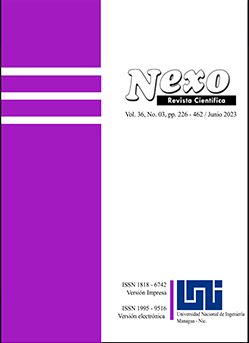Opportunities and challenges in preserving intellectual and human capital: strategies for readiness in a complex socio-economic context
DOI:
https://doi.org/10.5377/nexo.v36i03.16457Keywords:
Migration Processes, State Policy, State Regulation, State Policy InstrumentsAbstract
The study aims to develop measures to reduce the outflow (migration) of young people and improve human capital in the face of global complex socio-economic landscape. The paper determines strategic priorities for state regulation of youth migration processes. It is concluded that instruments for regulating youth migration and preserving intellectual and human resource potential should be directed toward reducing the level of positive migration aspirations among student and apprentice youth, ensuring employment and effective remuneration of labor. The system of preventive public policy instruments for managing youth migration includes efforts to increase employment, develop the micro and small business sector, raise the level of readiness of migrant youth to re-emigrate, enhance the competitiveness of the educational sector, and create international projects to develop human capital. Additionally, the study advocates for improving the competitiveness of the educational sector and fostering international projects that contribute to human capital development.
Downloads
1393
Downloads
Published
How to Cite
Issue
Section
License
Copyright (c) 2023 Universidad Nacional de Ingeniería

This work is licensed under a Creative Commons Attribution 4.0 International License.
The authors who publish in Nexo Scientific Journal agree to the following terms:
- Authors retain the copyright and grant the journal the right of the first publication under the license Creative Commons Attribution License, which allows others to share the work with a recognition of the authorship of the work and the initial publication in Nexo Scientific Journal.
- Authors may separately establish additional agreements for the non-exclusive distribution of the version of the work published in the journal (for example, in an institutional repository or a book), with the recognition of the initial publication in Nexo Scientific Journal.
- Authors are allowed and encouraged to disseminate their works electronically (for example, in institutional repositories or in their own website) before and during the submission process, as it can lead to productive exchanges, as well as earlier and greater citation of published works.










